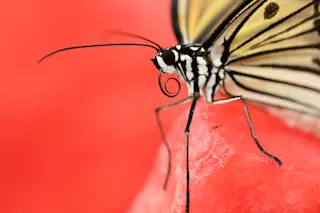An extreme preference for right-handedness is unique to our species. Credit: Working Title Films. Right-handedness is very much a human thing. About 90 percent of Homo sapiens are right-handed. On the other hand, literally, about 50 percent of apes are southpaws, similar to most other primates. Researchers believe that right-handedness may be linked to other traits, such as the development of language. They have long sought to find the point in hominin evolution where the right hand became dominant for the vast majority of a species. Previous research identified right hand dominance in Neanderthal fossils that were about 400,000 years old, but no one had found evidence of handedness older than that — until now. University of Kansas paleoanthropologist David Frayer and colleagues were able to determine whether a 1.8-million-year old hominin was dexter or sinister thanks to its teeth. Yeah, its teeth. Stay with me now.
You might think ...














